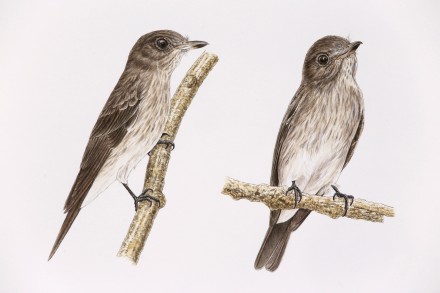Scientists confirm new bird species in Indonesia

Scientists have confirmed a new bird species found in the tropical rainforests on the Indonesian island of Sulawesi.
The Sulawesi Streaked Flycatcher (Muscicapa sodhii) lives in the forest canopy of the rugged hills of Sulawesi, and has heavily streaked underparts and relatively short wings.
Ding Li Yong, a PhD student at the Fenner School of Environment and Society, was part of an international team which described the bird as a new species.
“As a kid I was inspired by the great naturalists Darwin and Wallace, and the early explorers who risked their lives by leaving the comforts of Europe for the tropics to collect specimens for science,” said Mr Yong.
“So it was both exciting and strange to have a small association with the early naturalists.”
The bird was first noticed in 1997, but it did not fit with any known species. Until now it had been known informally as the undescribed Sulawesi flycatcher.
It has been found to be distinct from other flycatchers with significant differences in its plumage, body structure, song and genetics.
In 2012, Mr Yong was a high-school teacher in Singapore when he joined a group of researchers on an expedition from Princeton University, Michigan State University, the Indonesian Institute of Sciences, and the Celebes Bird Club.
The group had a National Geographic Society exploration grant to collect birds undescribed by science or poorly represented in museum collections.
After two weeks with no luck, a local villager gave the team the breakthrough.
“The locals knew we were there for a biological expedition, and so a hunter came to us with some dead birds. We obtained these specimens, and one was this new species,” Mr Yong said.
“We instantly knew that it couldn’t be anything else.”
“We named it in honour of our colleague and mentor Navjot Sodhi from the National University of Singapore, a specialist on tropical conservation.”
Mr Yong said the discovery highlighted the need to protect tropical forests globally.
“These forests harbour a lot of unknown diversity and natural resources,” he said.
The wide distribution of the birds, coupled with their apparent tolerance of disturbed habitats, suggests it is not currently threatened with extinction.
 Follow
Follow